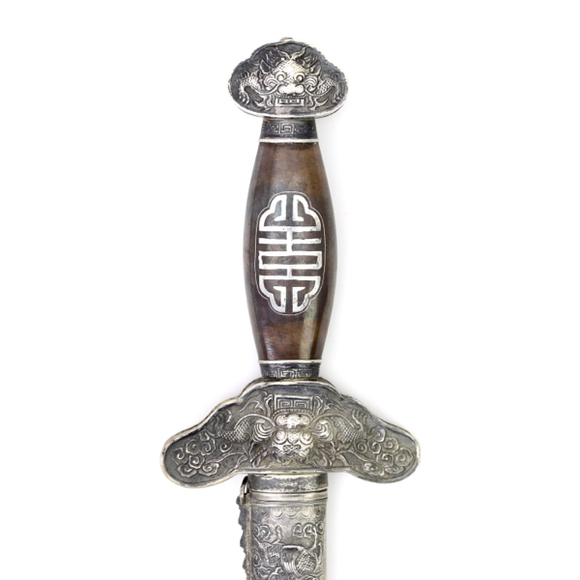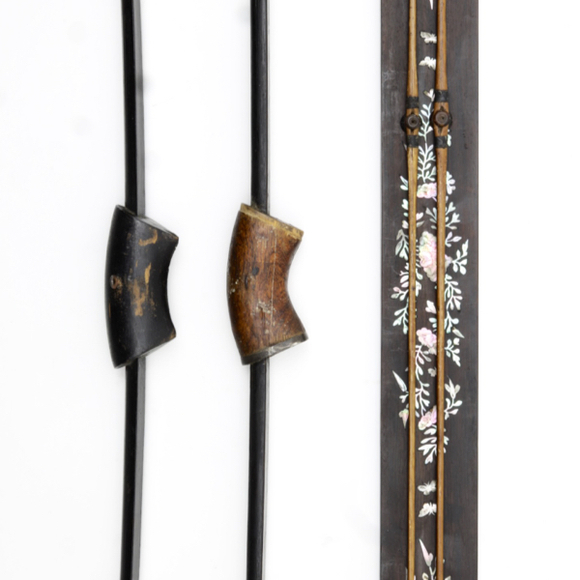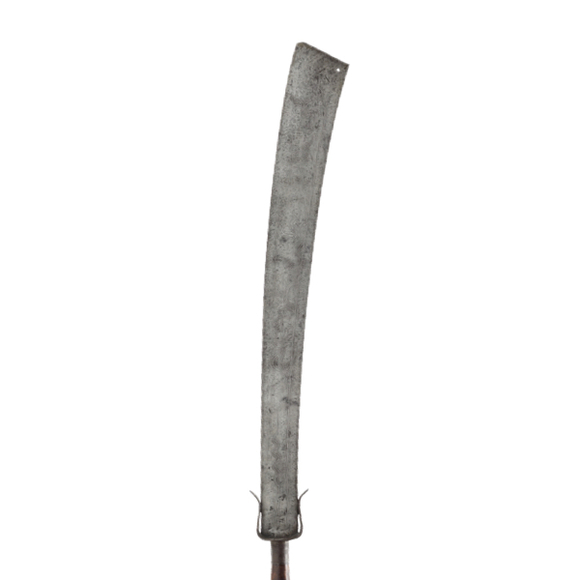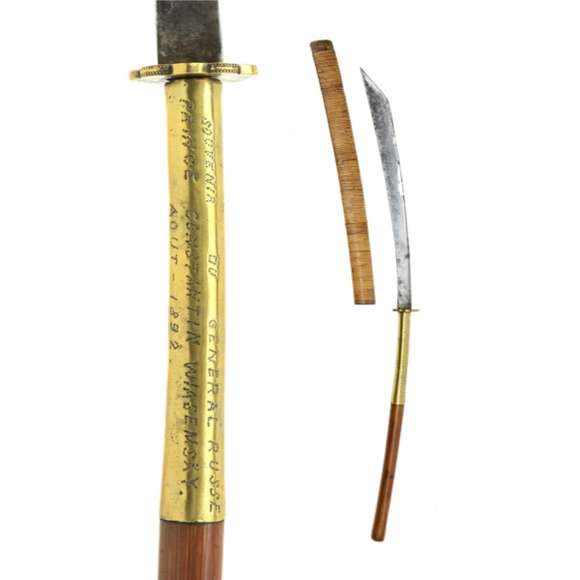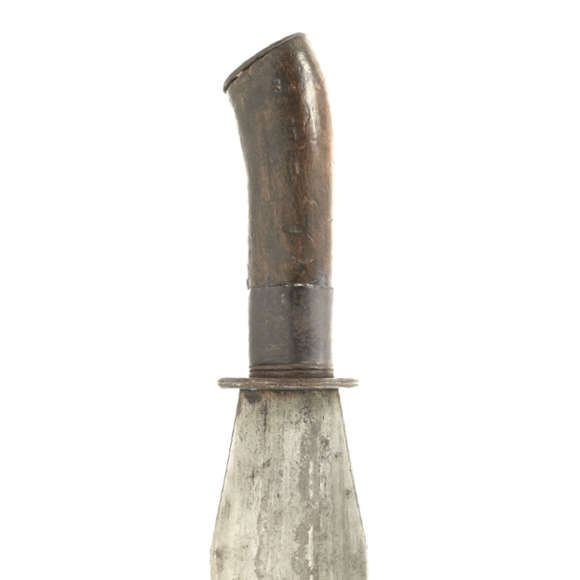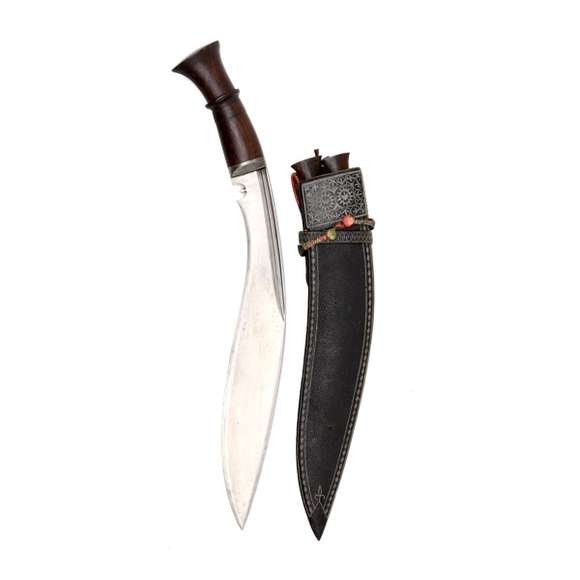A very rare ceremonial variety with copper scabbard inlaid with different alloys, and a brass blade.

Sheathed 71.4 cm
Sword 62 cm
48.6 cm
Base 6 mm
Middle 6 mm
5 cm from tip 4.7 mm
29 mm
24 mm
22 mm
Sheathed 726 grams
Sword 501 grams
12 from hilt side of guard
Iron/steel, brass, silver, hardwood, mother of pearl, buffalo horn
Nguyễn dynasty
Vietnam
Mid 19th century
From a French private collection
Description
An interesting Vietnamese sword (kiếm) utilizing a Chinese guard and following the Chinese hilt design. The brass guard is a typical Chinese jiàn guard depicting the all-devouring Tāotiè (饕餮), a monster that is typically depicted without its lower jaw.
The shape of the hilt follows suit in that it has the classic profile of a Chinese jiàn, but the workmanship and decoration is entirely Vietnamese; The copper pommel is engraved in typical Vietnamese style and the carved horn grip has the addition of longevity symbols on either side, again in a typical Vietnamese interpretation of the style.
The blade is also forged mimicking the heavier Chinese shortswords that were worn by various people of China as a status symbol and means of self-protection. However, the somewhat open grain of the forging is again typically Vietnamese and betrays that the piece was not forged in China, but in Vietnam. It is fairly stout and heavy, a real user, not merely a showpiece.
The scabbard is quintessentially Vietnamese, showing off everything that this culture was good at; very nicely executed silver scabbard mounts holding together two reddish-brown hardwood scabbard halves. Each was meticulously inlaid with the finest mother-of-pearl inlays that were done in the region. The silver scabbard mounts retain their natural blueish tarnish that indicates the high purity of the silver.
Attribution
The nature of the work, especially the scabbard, is very northern Vietnamese, done in a style that is strongly associated with the regalia of the Nguyễn dynasty. The sword itself looks, feels, and handles more like a Chinese sword, even though the workmanship is Vietnamese. This leads me to believe it was probably made for a Chinese client while utilizing the best of Vietnamese arts and crafts.
Condition
I deliberately kept the nice dark patination of the silver. There is some lifting grain in the wood, a natural occurrence that doesn't harm the piece structurally. Some play in the hilt was addressed by a previous owner by applying glue between guard and ferrule. Otherwise in original condition.

















An exceedingly rare set with fine mother of pearl inlaid string board
Collected by a Russian prince from the hill peoples of central Vietnam in 1892.
An understated, elegant khukuri of substantial proportions with fine layered blade.

